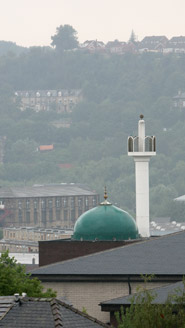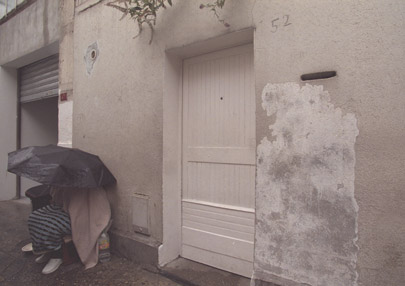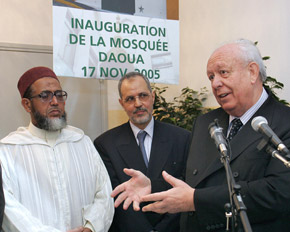The Tablighi Jama’at (“Society for Spreading Faith”) is a global educational and missionary movement whose primary purpose is to encourage Muslims everywhere to be more religiously observant. It currently operates in roughly 150 countries around the world, including in Western Europe.
According to the teachings of the Tablighi Jama’at, the reformation of society is achieved through personal spiritual renewal. To this end, the group encourages its followers to undertake short-term preaching missions, known as khuruj, in order to reinforce the religious norms and practices that, in its view, underpin a moral society. These missions typically last from a few days to a few months.
Snapshot: Tablighi Jama’at (the “Society for Spreading Faith”)
Origin Founded by Islamic scholar and teacher Maulana Muhammad Ilyas in 1926 in Mewat, India.
Stated Purpose/Goals To reform society by encouraging Muslims everywhere to be more religiously observant.
Method/Activities Small groups of missionary preachers travel together and reach out to Muslims of all social strata to remind them of the core principles of Islam, encouraging them to attend mosque prayers and listen to sermons.
Representative Organizations/Key Figures
- Maulana Hafiz Patel is the leader of the group in Britain and chief of its European headquarters, which is based in the U.K.
- Mohamed Younès is the group’s leader in France.
The movement does not have a large formal membership. Instead, it is largely comprised of small groups of itinerant male preachers – usually no more than 10 per group – who travel, eat, sleep, wash and pray together and often observe strict regimens relating to dress and personal grooming. When these groups of lay preachers arrive in a new area, they reach out to Muslims of all social strata in an effort to remind them of the core teachings of the Prophet Muhammad and encourage them to attend mosque prayers and listen to sermons.
The Tablighi Jama’at is thought to be one of the world’s largest religious movements. Exact membership figures are difficult to determine, however – given the diffuse nature of the group and the fact that many of its followers participate in its activities only on a part-time basis – and estimates range as widely as 12 million-80 million.41
Origins and Growth
The Tablighi Jama’at was founded in 1926 in Mewat, India, by Maulana Muhammad Ilyas, an Islamic scholar and teacher. The movement began as an effort to counteract the activities of Hindu revivalists in India, who at the time were attempting to convert Muslims to Hinduism. Worried that existing Islamic educational institutions were not capable of fending off the Hindu challenge, Ilyas envisioned a movement that would send missionaries to villages to instill Muslims with core Islamic values.
Despite its origins in interreligious tensions, the Tablighi Jama’at was for decades a generally apolitical and pacifist movement, which helped the group expand its membership beyond the Indian subcontinent to the Middle East, North Africa and elsewhere. While most Tablighis still live in Muslim-majority countries, such as Pakistan, Bangladesh and Indonesia, the group also has a significant presence in parts of Western Europe, particularly the U.K., France and Spain. Its European membership has been estimated at about 150,000 or more.42

Theologically, the Tablighi Jama’at movement is closely tied to the scriptural, conservative Deobandi school of Sunni Islam, which emphasizes strict adherence to religious orthodoxy. Most of the religious scholars and leaders associated with the Tablighi Jama’at are followers of Deobandism.
Although Deobandism originated in South Asia (in the town of Deoband, near Delhi in northern India), it has much in common with the Wahhabi style of Islam that is associated with Saudi Arabia’s religious establishment. However, Deobandi doctrine tends to be more flexible than Wahhabism and is more accepting of other Islamic approaches, such as Sufism.
Lack of Centralized Control
Various regional centers run by Deobandi scholars affiliated with the Tablighi Jama’at attempt to oversee the movement’s activities in particular areas. But Tablighis are hard to monitor and supervise, in part because there are so many of them. Administrative control is further complicated by the fact that temporary participants make up a large percentage of the group’s membership at any given time. Many of those who participate in its missionary activities do so only on weekends or once or twice per month.
The lack of centralized control means that various Tablighi missionaries operate in different ways and often improvise rather than follow a standard strategy. As a result, the movement’s impact tends to vary widely depending on the methods, intentions and inclinations of its local leaders and followers. For instance, a large Tablighi complex in the British town of Dewsbury functions as a regional headquarters, coordinating Tablighi activities throughout Northern Europe. Other centers, however, focus more on local concerns or on serving particular ethnic populations. For example, the Tablighi center in Barcelona has geared its efforts to the needs of the city’s immigrants of North African origin. In France, there is a major Tablighi center in St. Denis, outside of Paris, but most Tablighi groups in the country operate independently, primarily by building relationships with local mosques.

Tablighi followers in the U.K. tend to be of South Asian descent. The movement in Britain includes many socially mobile professionals and business owners, as well as people from lower- and lower-middle-class backgrounds, who represent the movement’s traditional constituencies. In France and Spain, by contrast, Tablighis are largely made up of working-class Muslims from the Maghreb region of North Africa.43
While the group has enjoyed substantial growth in much of Europe, its missionary efforts on the continent have not always been successful. In Germany, for instance, Tablighis have found it difficult to penetrate Muslim communities comprised largely of immigrants from Turkey, a country where the Tablighi Jama’at has virtually no presence.
Working Within the System

Over the course of its decades-long presence in Western Europe, the Tablighi Jama’at has largely come to terms with and adapted to the reality of religious, social and political pluralism in the region. This is particularly true regarding issues of law, politics and civil society. For example, the movement has shown a great willingness to partner with non-Muslim political institutions to further its ends. Indeed, in many parts of Western Europe, the Tablighis have developed a sophisticated understanding of how to engage and work the levers of local political power. In France, for example, local Muslim groups were unable to build a mosque in the southern port city of Marseille until the Tablighis succeeded in partnering with the city’s conservative mayor, Jean-Claude Gaudin, who publicly backed the initiative. This helped clear a path for the mosque’s construction in 2007.
On the other hand, when Tablighis in Britain bought a large tract of land in London and began planning for an enormous new mosque complex – which would have been the largest religious building in Britain – near the site of the 2012 Olympic facilities, opposition quickly developed. Members of the public raised concerns about having so visible a Muslim presence in proximity to the Olympic Games, as well as about the movement’s possible ties to extremism. Despite retaining a public relations firm to address these concerns, the Tablighis were forced to scrap their plans for the mosque in early 2010.
In recent years, the Tablighi Jama’at has used the media, particularly new communications technologies, to spread its message. As recently as a decade ago, the movement viewed information technology with considerable skepticism. Now, however, short videos by the Tablighi Jama’at proliferate across websites such as YouTube, indicating an increasing awareness on the part of the group that it needs to find new ways to compete in the teeming marketplace of Muslim ideas.
Links to Other Groups
While most followers of the Tablighi Jama’at are primarily interested in matters of personal piety and spiritual self-renewal, some have been accused of having ties to radical networks. This concern has been raised from time to time since the 9/11 terrorist attacks in the U.S. by journalists, law enforcement personnel and national security policymakers in the West who say the group’s missionary activities and loose organizational structure can be exploited by radical elements.44 “Shoe bomber” Richard Reid, who in 2001 tried to set off a bomb on a commercial aircraft, and John Walker Lindh, the American citizen captured by U.S. forces with Taliban soldiers in Afghanistan in 2001, both spent time in Tablighi circles. And because the group has strong ties to Deobandi Islam, the same school of thought that informs the religious worldview of the Taliban, certain Tablighi Jama’at leaders from South Asia have been linked to some of the same networks as Taliban scholars.
For More Information
For more on the Tablighi Jama’at, see:
Masud, Muhammad Khalid, editor. Travellers in Faith: Studies of the Tablighi Jama’at as a Transnational Movement for Faith Renewal. Brill, 2000.
Sikand, Yoginder. Origins and Development of the Tablighi Jama’at (1920-2000): A Cross-Country Comparative Study. Sangam Books, 2002.




